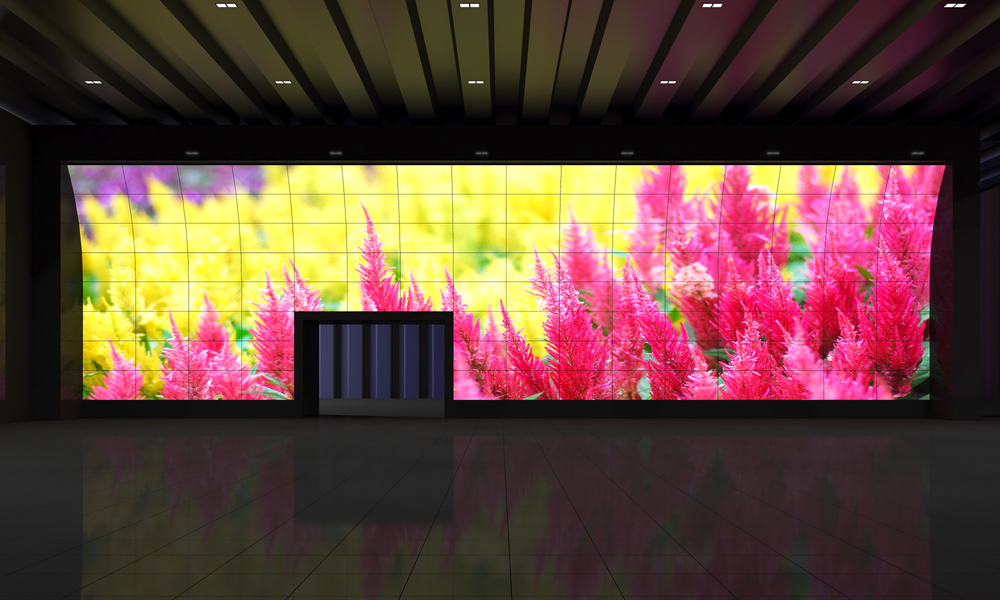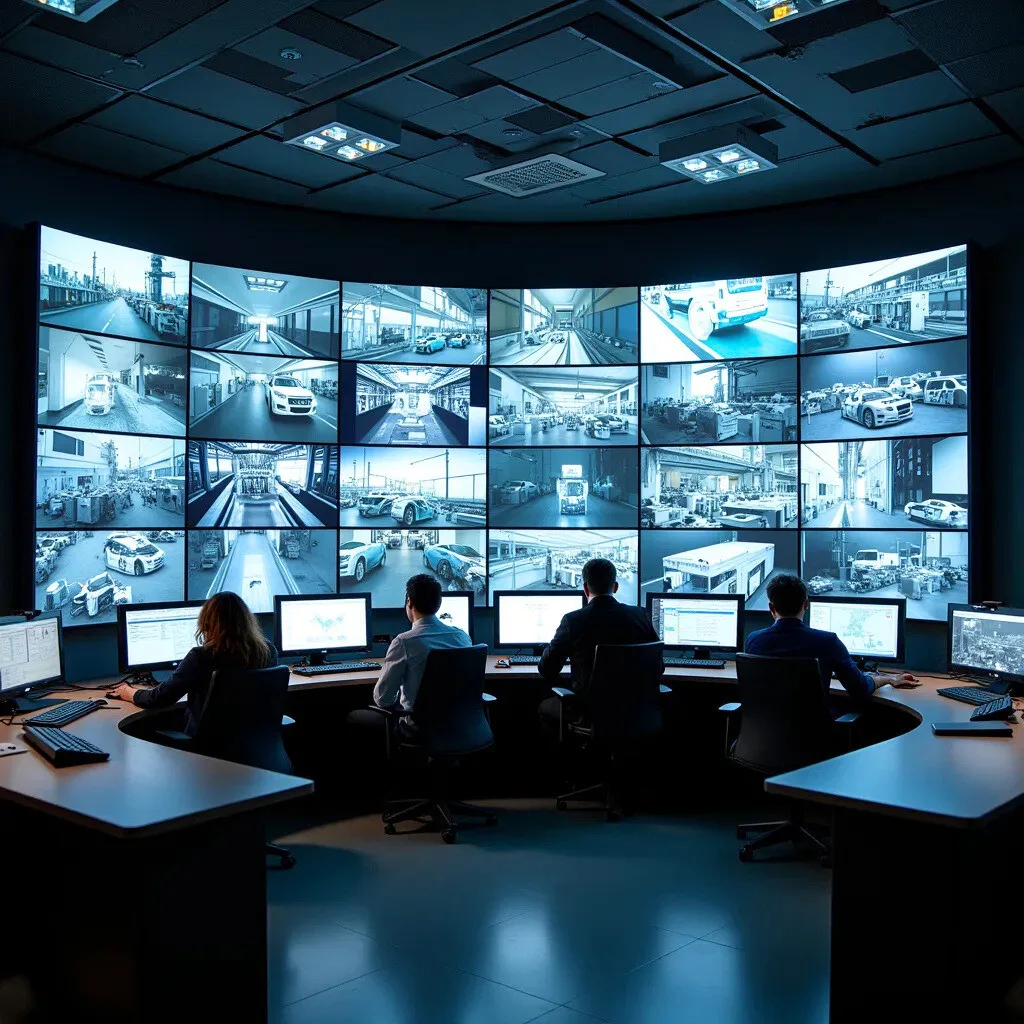Our experience spans two dedicated websites.
Discover the world of Collaborative and Meeting Spaces:
Discover the world of Collaborative and Meeting Spaces:
Last update: 22/05/25
Video walls are powerful visual tools, but they’re only as good as the screens they’re built around. Whether it’s technology, configuration, contrast or calibration, every detail counts.
Focus on the central element of the video wall: the screens.
The main advantage of a video wall, made up of several monitors side by side, is its modularity. Screens can be added or removed as requirements change, allowing great flexibility in terms of size and resolution. What’s more, each screen can operate independently or be synchronised with the others, offering a wide range of display configurations.
A single large screen can offer exceptional resolution, especially if we’re talking about a 4K or 8K screen. However, a video wall made up of high-resolution screens can surpass this capacity, offering an impressive cumulative resolution. For example, a wall made up of four 4K screens offers a resolution equivalent to 16K.
Replacing or maintaining a large screen can be costly, especially if the screen is very large or uses cutting-edge technology. Conversely, with a video wall, if a module fails, you simply replace the faulty screen, which can be more economical and less disruptive to the user experience.
Finally, for larger screens, a video wall is more economical than a single very large screen.
Large spaces, such as lobbies, conference rooms or control centres, can benefit from the size and presence of a wall of screens. These installations provide better visibility from a distance and can be adapted to the specific dimensions of the room. A single large screen, although impressive, may be limited in size by its construction.

The intended use of the screen has a major influence on the choice. For dynamic, interactive or segmented displays, a wall of screens offers more possibilities. For example, in a surveillance centre, each screen can display different video streams. On the other hand, for a film presentation or a conference, a single large screen might be preferable to guarantee a uniform and immersive experience, as there is no bezel (width of the frame of each juxtaposed screen):

The choice of screen technology is central to the performance of a video wall. There are five main technologies:
LCD (Liquid Crystal Display) : LCD is the most widely used technology for video walls. It offers excellent value for money and is well suited to large installations thanks to its low power consumption and durability. The strong point of LCD is its ability to display sharp, bright images with a good level of contrast. However, the edges of LCD screens can sometimes create a “bezel” effect that disturbs the continuity of the image.
LCD remains by far the most widely used technology to date, mainly for economic reasons.
DLP backlit cube: this is an ageing technology that uses video projection to backlight a canvas screen. The advantage was, of course, that there was no afterglow. This technology is still used in many video walls around the world, but we won’t dwell on it here because it’s a solution that’s on the way out.
LED (Light Emitting Diodes) : LED screens are made up of diodes that emit light when an electric current is passed through them. This technology is on the rise because of its ability to produce vivid colours and high contrast, its flexibility in terms of size and its relative energy efficiency compared with older display technologies. LED screens are also recognised for their thinness, lightness and ability to offer a wide viewing angle.
LED screens are now being pushed by all the major manufacturers (Samsung, LG, etc.) but are still very much in the minority because of the cost difference with LCD technology.
OLED (Organic Light Emitting Diodes): OLED screens have revolutionised display thanks to their ability to produce deep blacks, but also thanks to the extreme thinness of the screen (less than 2 cm). Each pixel is a light-emitting diode that emits its own light, resulting in exceptional contrast and vivid colours. However, this technology is often more expensive and can be subject to the “burn-in” phenomenon, where prolonged static images can leave a permanent imprint.
In the professional world, OLED screens are now used in commercial and marketing applications where the quality of the images and the perception of the screen itself play a vital role.
MicroLED: This is the newest screen technology, proposed mainly by Samsung. Like OLED, MicroLED is a self-emitting screen, but without the disadvantages of burn-in. It offers superior brightness, contrast and longevity, but its cost remains high.
We’re close to perfect technology here, with quality that comes close to the real world, but unfortunately the price is accordingly high.
> As you can see, the selection of the appropriate technology will depend on the project specifications and budgetary constraints.
A standard video wall is typically configured by juxtaposing 16:9 screens mounted vertically (portrait) or horizontally (landscape). The number and configuration of screens are determined according to technical requirements and the intended applications. For instance:

It is entirely possible to adjust this ratio or to combine landscape and portrait orientations for a unique rendering.
Asymmetrical layouts give your space a resolutely modern look.
When installing an asymmetrical screen wall solution, careful planning is required in terms of both the layout of the screens and the content to be projected. Neglecting either of these dimensions can compromise the success of the project. For example, the content could appear distorted or certain parts could end up in areas that are not visible.
Here are some examples of possible arrangements:

With a rich range of technologies and display methods at our disposal, we are able to customise and optimise each solution to meet the needs of your project. If you would like to find out more about a screen wall solution, contact our specialists.

Copyright © 2025. MOTILDE. All rights reserved.